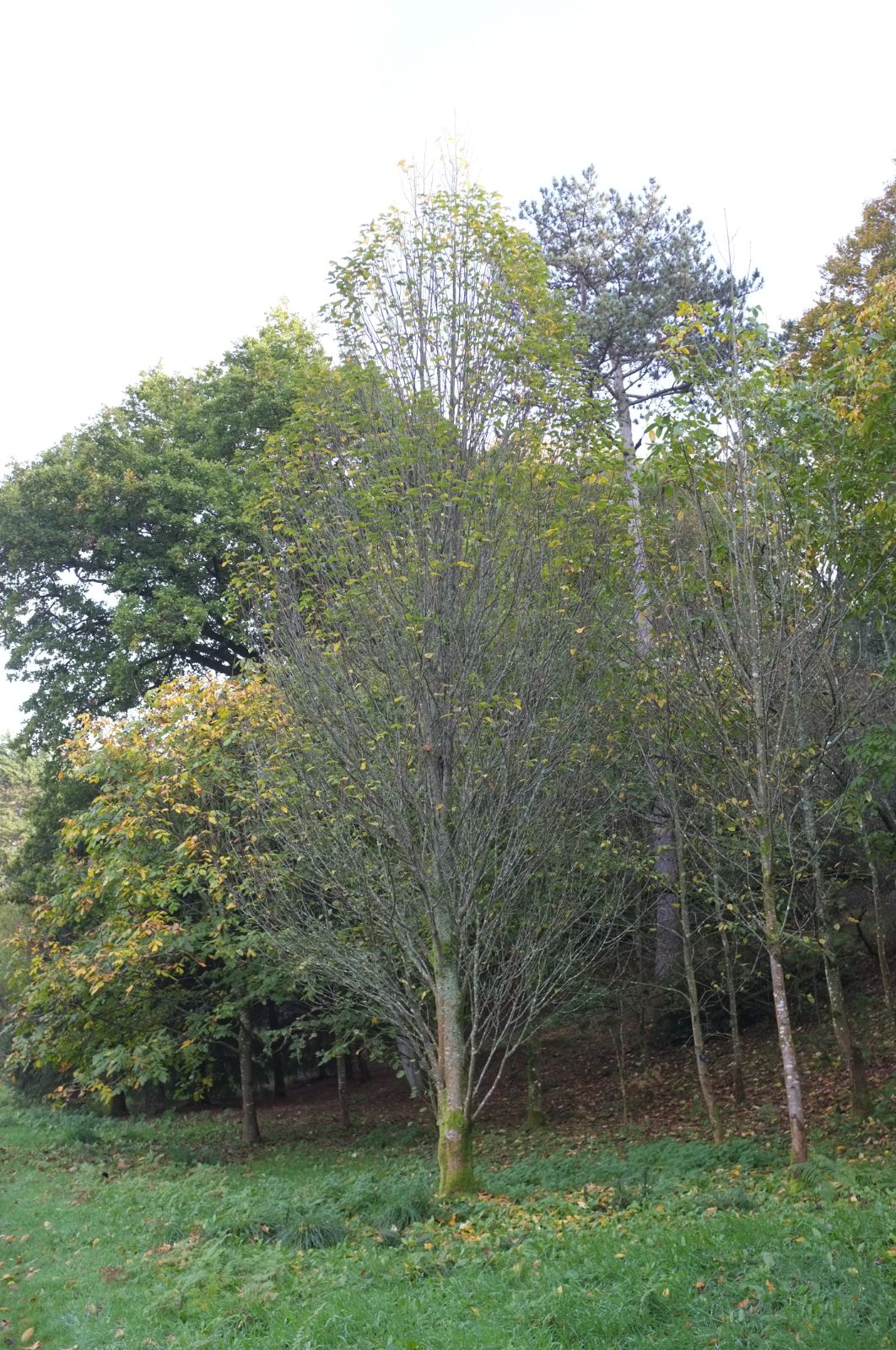Prunus cornuta
Credits
Article from Bean's Trees and Shrubs Hardy in the British Isles
Recommended citation
'Prunus cornuta' from the website Trees and Shrubs Online (treesandshrubsonline.
Genus
Common Names
- Himalayan Bird Cherry
Synonyms
- Cerasus cornuta Royle
- Padus cornuta (Royle) Carr.
Infraspecifics
Other taxa in genus
- Prunus alleghaniensis
- Prunus americana
- Prunus × amygdalo-persica
- Prunus amygdalus
- Prunus angustifolia
- Prunus apetala
- Prunus arabica
- Prunus argentea
- Prunus armeniaca
- Prunus avium
- Prunus besseyi
- Prunus brigantina
- Prunus campanulata
- Prunus canescens
- Prunus cantabrigiensis
- Prunus cerasifera
- Prunus cerasus
- Prunus cocomilia
- Prunus concinna
- Prunus conradinae
- Prunus consociiflora
- Prunus cuthbertii
- Prunus dasycarpa
- Prunus davidiana
- Prunus × dawyckensis
- Prunus dielsiana
- Prunus domestica
- Prunus dulcis
- Prunus emarginata
- Prunus × fontanesiana
- Prunus fruticosa
- Prunus glandulosa
- Prunus grayana
- Prunus himalaica
- Prunus hortulana
- Prunus humilis
- Prunus ilicifolia
- Prunus incana
- Prunus incisa
- Prunus jacquemontii
- Prunus kansuensis
- Prunus lannesiana
- Prunus laurocerasus
- Prunus litigiosa
- Prunus lusitanica
- Prunus maackii
- Prunus mahaleb
- Prunus maritima
- Prunus maximowiczii
- Prunus microcarpa
- Prunus mira
- Prunus mugus
- Prunus mume
- Prunus nigra
- Prunus nipponica
- Prunus orthosepala
- Prunus padus
- Prunus pensylvanica
- Prunus persica
- Prunus pilosiuscula
- Prunus prostrata
- Prunus pumila
- Prunus rufa
- Prunus salicina
- Prunus sargentii
- Prunus serotina
- Prunus serrula
- Prunus serrulata
- Prunus sibirica
- Prunus × sieboldii
- Prunus simonii
- Prunus sogdiana
- Prunus speciosa
- Prunus spinosa
- Prunus ssiori
- Prunus subcordata
- Prunus subhirtella
- Prunus takesimensis
- Prunus tangutica
- Prunus tenella
- Prunus tomentosa
- Prunus triloba
- Prunus virginiana
- Prunus × yedoensis
A deciduous tree 50 to 60 ft high in the wild; young shoots either finely downy or quite glabrous. Leaves ovate-oblong, or somewhat obovate, 3 to 6 in. long, 11⁄2 to 2 in. wide, the base varying from heart-shaped to tapering, the apex slender-pointed, the margins finely toothed, downy along the midrib and veins beneath when young, deep dull green above, paler beneath; stalk 1⁄2 to 11⁄4 in. long, mostly with glands at the top. Flowers white, densely set on cylindrical, quite glabrous, or finely downy racemes, 3 to 6 in. long, 3⁄4 to 1 in. wide; each flower is 1⁄4 to 1⁄3 in. across. Fruits round, 1⁄3 in. in diameter, red, changing to dark brown purple. Flowers in May. Bot. Mag., t. 9423.
Native of the Himalaya as far east as Sikkim, and the representative in that region of P. padus. So nearly are they allied that many botanists regard them as forms of one species. According to travellers in the Himalaya, P. cornuta grows to considerably larger size than does P. padus as we know it in England. The name cornuta (horned) refers to the shape of the fruits as often seen in the Himalaya. An insect deposits its eggs in the young fruit, and as the larvae develop they set up irritation and cause a curious growth, which is from 1 to 2 in. long and curled like a horn. It is analogous to the many galls that occur on our own trees – notably oaks.
P napaulensis (Ser.) Steud.
Synonyms
Cerasus napaulensis Ser

